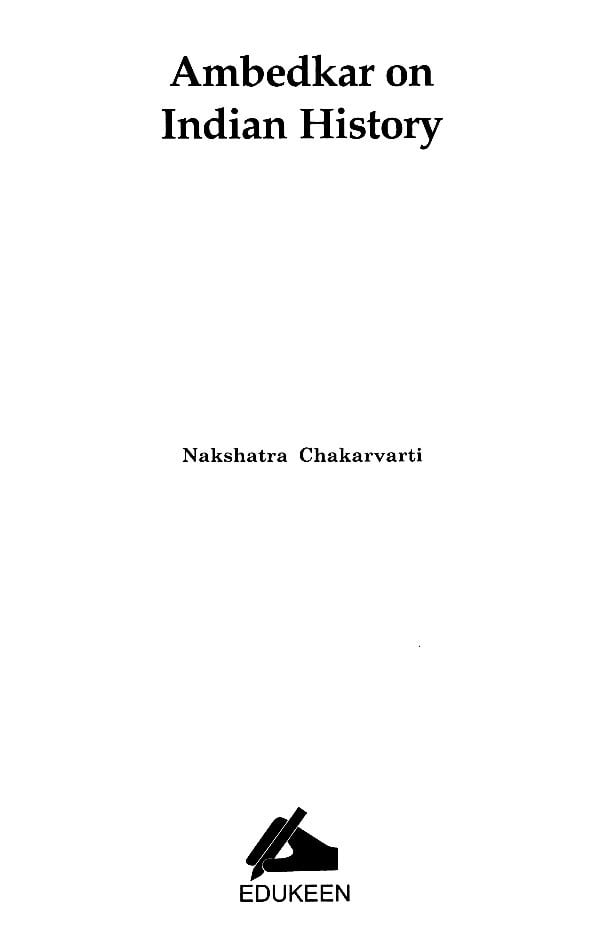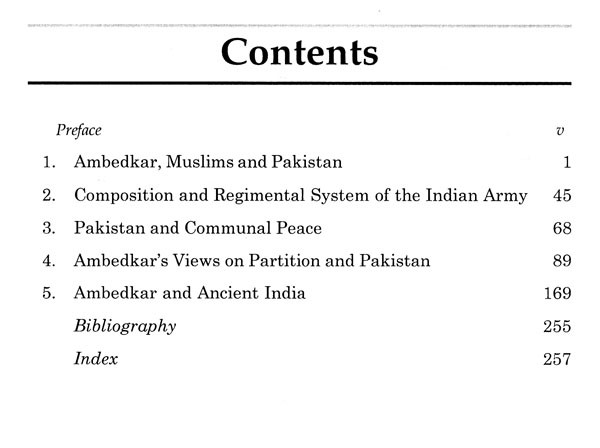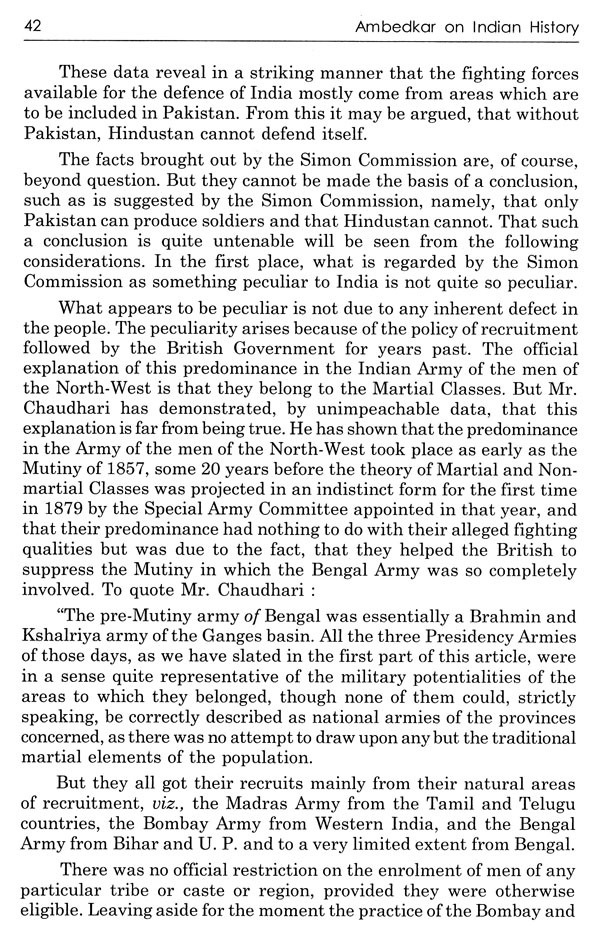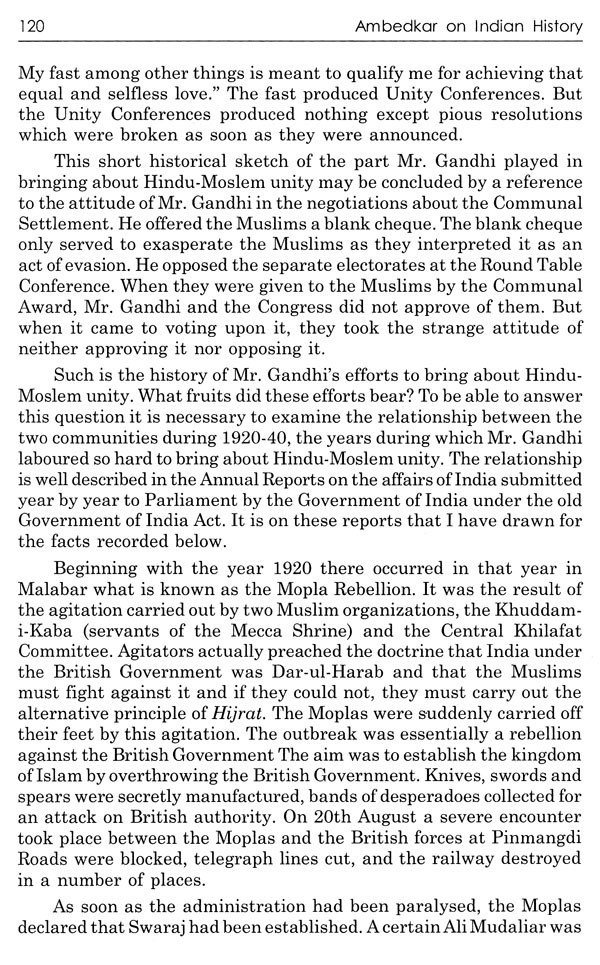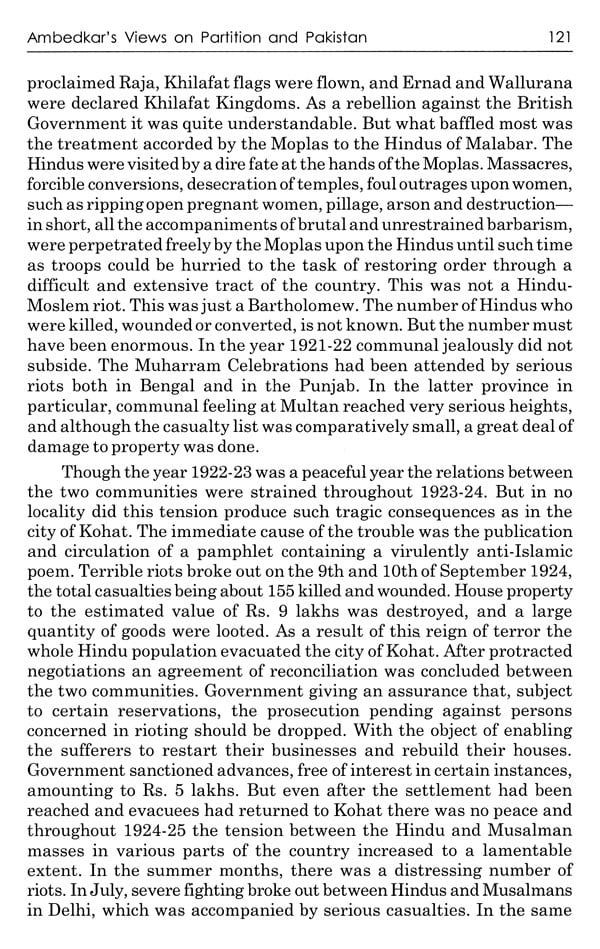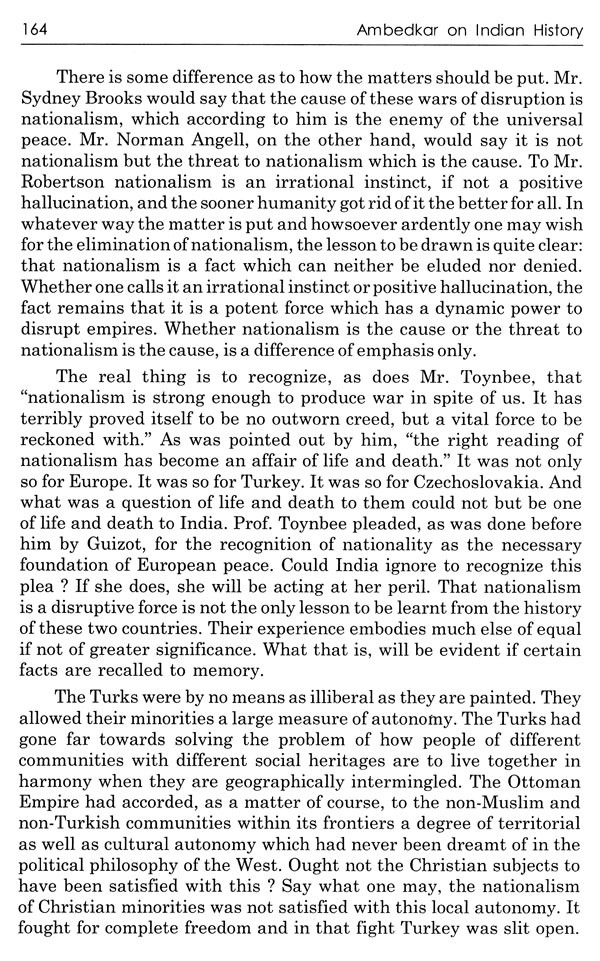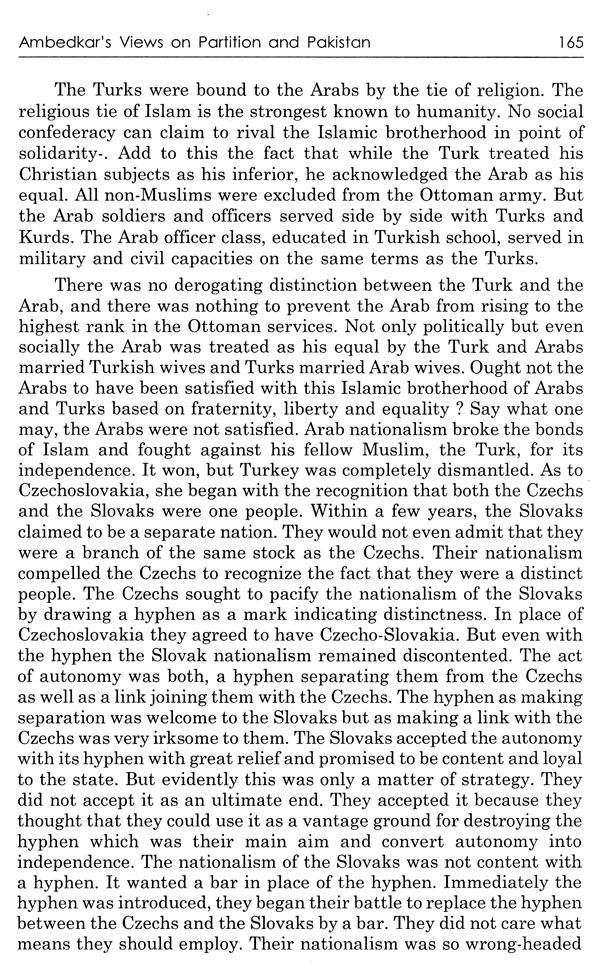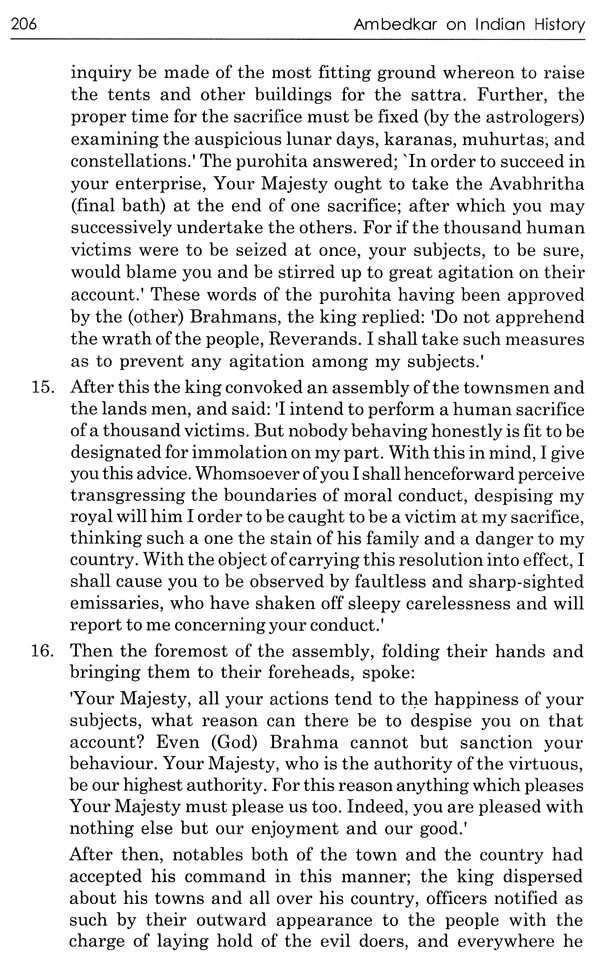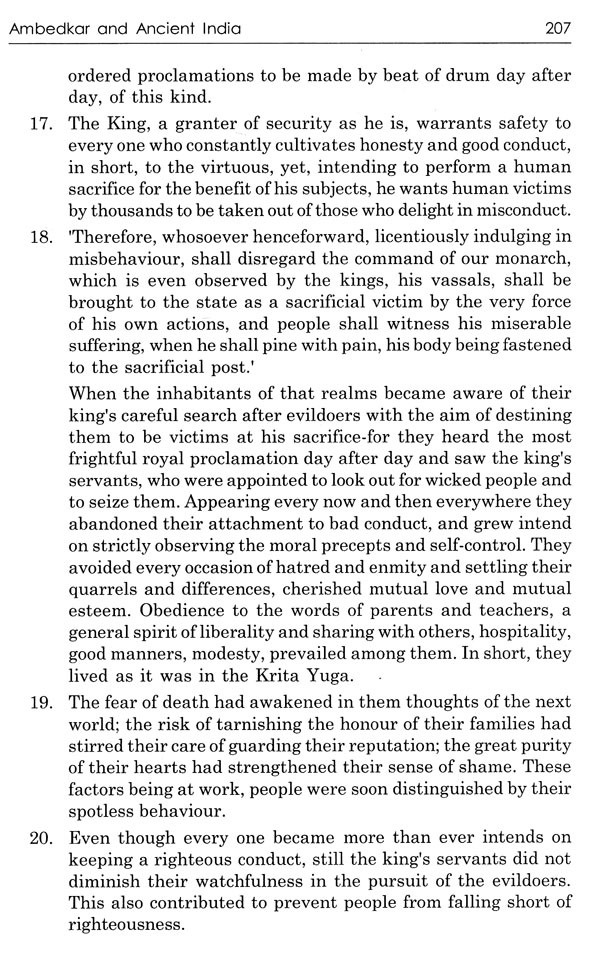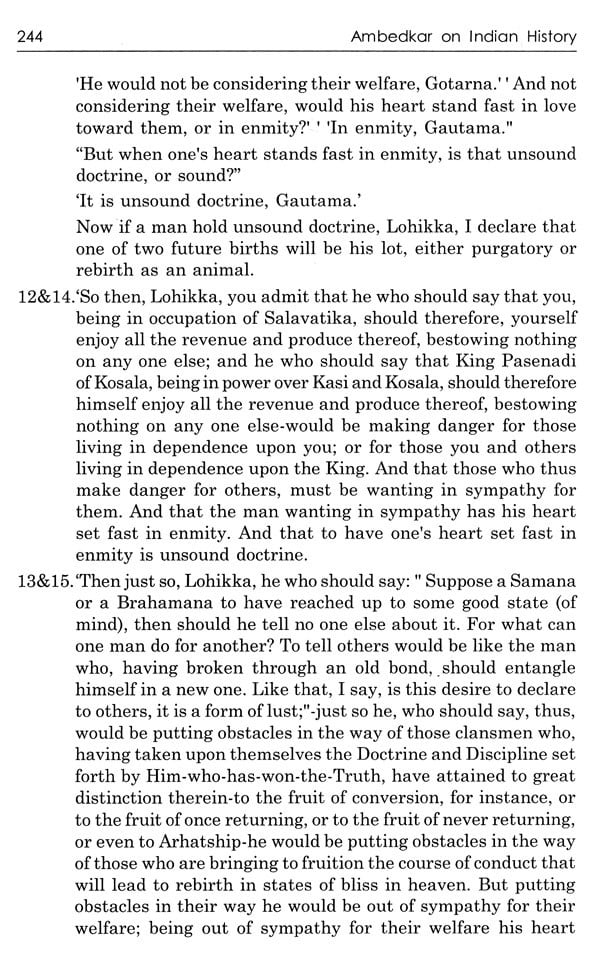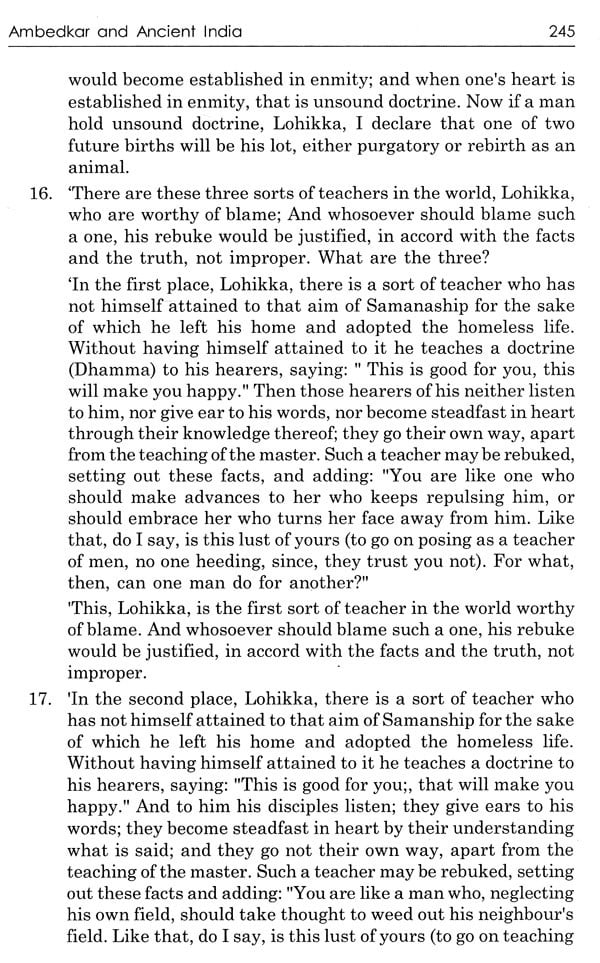
Ambedkar on Indian History
Book Specification
| Item Code: | UAR504 |
| Author: | Nakshatra Chakarvarti |
| Publisher: | Edukeen Publisher |
| Language: | English |
| Edition: | 2022 |
| ISBN: | 9789390379705 |
| Pages: | 265 |
| Cover: | HARDCOVER |
| Other Details | 9.50 X 6.50 inch |
| Weight | 620 gm |
Book Description
Bhimrao Ramji Ambedkar (14 April 18916 December 1956), popularly known as Babasaheb Ambedkar, was an Indian jurist, economist, politician and social reformer who inspired the Dalit Buddhist movement and campaigned against social discrimination towards the untouchables (Dalits), while also supporting the rights of women and labour. History, whether Indian or European, gives no unqualified support to this dogma. In Europe, the old traditions and superstitions which seemed to the eighteenth century to be the very root of injustice, have been eliminated. Who Were the Shudras is a history book published by Indian social reformer and polymath B. R. Ambedkar in 1946. The book discusses the origin of the Shudra Varna. Ambedkar dedicated the book to Jyotirao Phule (1827-1890). In the book Ambedkar, citing Rigveda, Mahabharata and other ancient vedic scriptures, estimates that the Shudras were originally Aryans. They were a part of the Kshatriya Varna. Ambedkar also discusses Aryan race theory and rejects Indo-Aryan migration theory in the book. This comprehensive book throws a new light on Indian social history. Students and general readers will find this book valuable in their work.
Nakshatra Chakarvarti is Lecturer, Department of History, Bundelkhand University, Jhasi, U.P.. His several research papers have been published in reputed journals. He has also attended many national seminars.
Bhimrao Ramji Ambedkar (14 April 1891 - 6 December 1956). popularly known as Babasaheb Ambedkar, was an Indian jurist, economist, politician and social reformer who inspired the Dalit Buddhist movement and campaigned against social discrimination towards the untouchables (Dalits), while also supporting the rights of women and labour. History, whether Indian or European, gives no unqualified support to this dogma. In Europe, the old traditions and superstitions which seemed to the eighteenth century to be the very root of injustice, have been eliminated. India is a land of ancient civilization. India's social, economic, and cultural configurations are the products of a long process of regional expansion. Indian history begins with the birth of the Indus Valley Civilization and the coming of the Aryans. These two phases are usually described as the pre-Vedic and Vedic age. Hinduism arose in the Vedic period. The fifth century saw the unification of India under Ashoka, who had converted to Buddhism, and it is in his reign that Buddhism spread in many parts of Asia. In the eighth century Islam came to India for the first time and by the eleventh century had firmly established itself in India as a political force. It resulted into the formation of the Delhi Sultanate, which was finally succeeded by the Mughal Empire, under which India once again achieved a large measure of political unity. It was in the 17th century that the Europeans came to India. This coincided with the disintegration of the Mughal Empire. paving the way for regional states. In the contest for supremacy, the English emerged 'victors'. The Rebellion of 1857-58, which sought to restore Indian supremacy, was crushed; and with the subsequent crowning of Victoria as Empress of India, the incorporation of India into the empire was complete. It was followed by India's struggle for independence, which we got in the year 1947.
Who Were the Shudras? is a history book published by Indian social reformer and polymath B. R. Ambedkar in 1946. The book discusses the origin of the Shudra Varna. Ambedkar dedicated the book to Jyotirao Phule (1827-1890). In the book Ambedkar, citing Rigveda, Mahabharata and other ancient vedic scriptures, estimates that the Shudras were originally Aryans. They were a part of the Kshatriya Varna. Ambedkar writes in the preface of the book, "Undoubtedly the conclusions which I have reached as a result of my investigations. Two questions are raised in this book: (1) Who were the Shudras? and (2) How they came to be the fourth Varna of the Indo-Aryan society? Importantly, Ambedkar states that the Shudras of Hindu society are entirely different from Shudras of ancient Indo-Aryan Society. He writes, "...Such an inference is without any foundation, for the Shudras of the Indo-Aryan Society are absolutely different in race from the Shudras of the Hindu Society. The Shudras of the Hindu Society are not the racial descendants of the Shudras of the Indo-Aryan Society. This confusion has arisen because of the failure to realise that the meaning of the word 'Shudras' in the Indo-Aryan society is quite different from the meaning it has in the Hindu society. In the Indo Aryans the word Shudra was proper name of one single people. It was the name of a people who belonged to a particular race. The word Shudra, as used in the Hindu society, is not a proper name at all. It is an epithet for a low uncultured class of people. It is a general cognomen of a miscellaneous and heterogeneous collection of tribes and groups, who have nothing in common except that they happen to be on a lower plane of culture. It is wrong to call them by the name Shudras. They have very little to do with their namesakes of the Aryan society, who had offended the Brahmins. It is a pity that these innocent and backward people of later days have been rolled up with the original Shudras and subjected to the same penalties for which they had given no cause." Ambedkar also discusses Aryan race theory and rejects Indo Aryan migration theory in the book.
This comprehensive book throws a new light on Indian social history. Students and general readers will find this book valuable in their work.
**Contents and Sample Pages**
